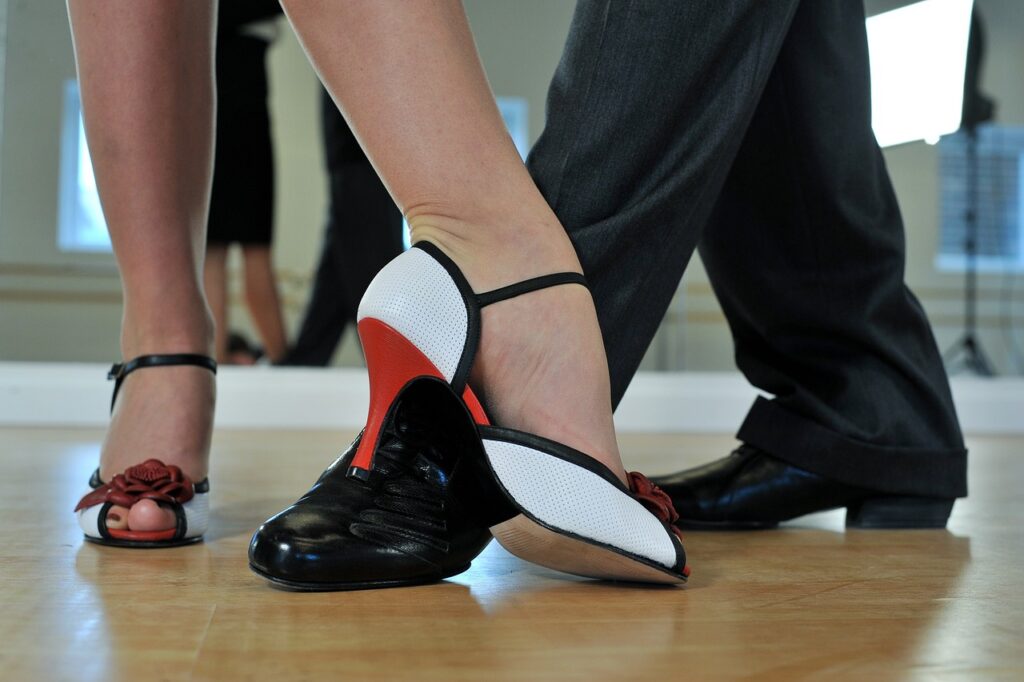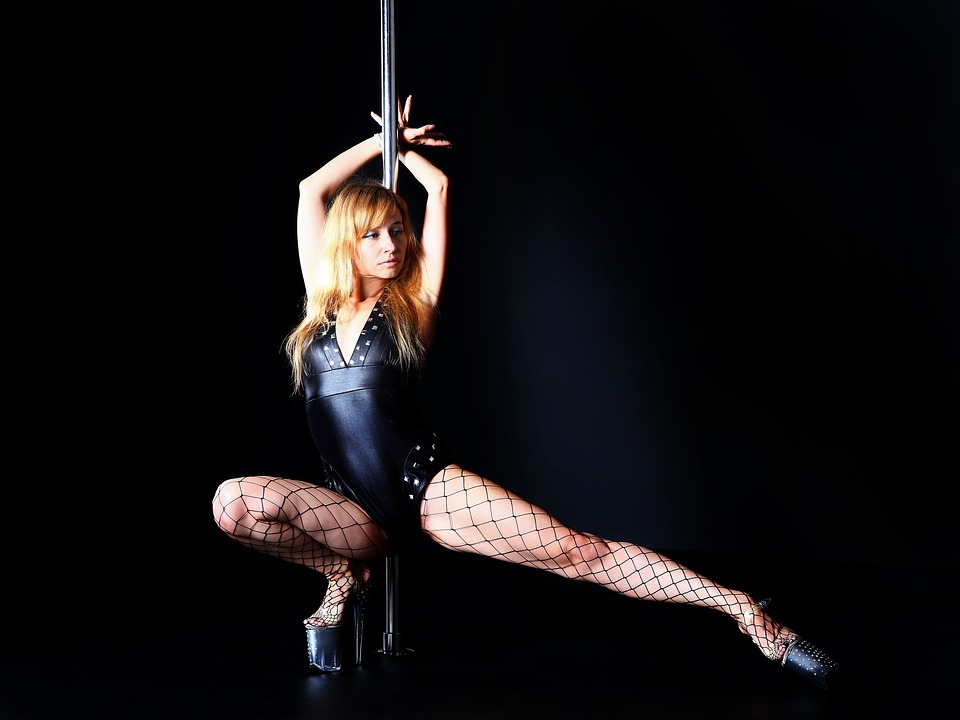
Summary
Dance legwork: our tips for shining on the dance floor
FootworkThis is a key element in dance, distinguishing novices from experts. It is a series of steps and lower body movements that define the style of dance, whether it be jazz, hip hop, swingor rock. Mastering these techniques is essential if you want to excel on the track.
We will discuss techniques and tips to perfect your footwork, which is essential for turning every performance into a real work of art. Whether your style is elegant or energetic, mastering footwork will captivate your audience.
This article will guide you through the basic and advanced techniquesDiscover how jazz and rock pioneers used these movements to create distinctive styles, and how you can integrate them into your own artistic expression. Discover how the pioneers of jazz and rock used these moves to create distinctive styles, and how you can incorporate them into your own artistic expression. Ready to shine in dance?
Summary
Introduction to dance footwork
THE dance footwork is a key element in determining the quality and brilliance of a performance. This sequence of steps and lower body movements distinguishes dance from other forms of bodily expression.
In the art of dance, footwork requires a high level of skill. precise coordination between the legs, feet and the rest of the body. This involves the ability to move nimbly and synchronously, making fluid changes of direction and distributing the body's weight appropriately when bearing down.
Dancers must master a variety of steps and movements, including steps, weight transfers, kicks, pointe and glides. Each movement requires a specific technique and continuity of execution. For example, steps performed with or without weight transfers require different techniques, which affects the fluidity and elegance of the dance.
There foot position also plays an important role. Dancers need to pay attention to the alignment of the feet, their orientation (in or out) and the height of the steps. They should also consider the different options positioning - like the natural dehors position, for example, where the knees bend forward in parallel, considered to be the most stable and natural position for dancing.
Groups such as Collectif Jeu de Jambesunder the direction of Michèle Guigon, highlight the importance of footwork in jazz and hip hop dance. These artists, dressed in their emblematic black jackets and trousers, show remarkable skill in their movements, alternating with ease between tap and acrobatics, while incorporating elements of swing and African rhythms into their performances.

Why footwork is crucial in dance
Improving technique
THE footwork is fundamental to refining dance technique. It allows dancers to move with speed and coordination, essential for complex steps and instantaneous changes of direction.
An excellent command of footwork guarantees proper weight distribution of the body, minimising the risk of injury while improving stability and balance. In styles such as jazz or hip hopMovements such as the shuffle, mambo or pas bourré require impeccable synchronisation between the legs and the rest of the body. Explore different options of movements can enrich the diversity and complexity of your footwork.
These movements, involving lateral shifts and weight transfers, are impossible without strong footwork.
Aesthetics
L'aesthetics of a performance is largely influenced by footwork. Legs that move with elegance and fluidity enrich the art of dance, making the performance more attractive to the audience. Dancers with expert footwork can create harmonious visual lines and shapes, enhancing the beauty and expression of their dance.
In styles such as jazz rock or swingThe footwork is often underlined by dynamic, energetic movements, such as kicks and taps, which inject spectacle and dynamism into the performance.
Health benefits
In addition to its technical and aesthetic advantages, footwork also provides a number of other benefits. health benefits. Dancing is a cardiovascular activity that strengthens the heart, improves blood circulation and reduces the risk of cardiovascular disease. The complex movements and jumps that are an integral part of footwork strengthen muscles, improve suppleness and flexibility, and contribute to better posture and balance.
In addition, exercises designed to improve footwork, such as pas chassé, shadowboxing and hopping, can also increase endurance and physical stamina, which are beneficial to the dancer's overall health.
The basics of footwork
Posture and alignment
There posture and thealignment play a key role in the development of effective footwork. In dance, keeping a balanced body position and stable is fundamental.
The foot position is the starting point, with the feet either parallel or in a natural outward position, where the knees bend parallel and forward. This natural open position is the most stable and optimal for dancing, facilitating balanced weight distribution and increased hip mobility. It is advisable to keep the knees slightly bent to better absorb shocks and promote fast, fluid movements.
The weight of the body should be distributed evenly over both feet, or concentrated on one foot depending on the movement. This distribution is essential for maintaining balance and control when moving. In boxing and other martial arts, the basic stance is characterised by feet shoulder-width apart, with the dominant foot slightly behind, allowing agile movements in all directions.
Fundamental movements
THE fundamental movements of footwork include various steps and movements that form the basis of many dance styles. The no basisor walking, is a simple movement on a beat, similar to a point-transfer. The triple stepor shuffle, is a more dynamic two-beat movement, often used in jazz and swing dance.
Other key moves include the shuffle, which is a lateral shifting of the feet, and the mambo, characterised by a slow movement of the feet from side to side to control the timing and refine the footwork. The not drunkThis is vital for transferring body weight quickly.
THE kicks and the spikes are also essential. A kick is the action of extending the leg in front of you, with the foot flexed or stretched out, while a toe touch is the act of touching the ground with the tip of the foot without transferring the weight.
These techniques require great flexibility and an coordination between the legs and the rest of the body. Finally, the slipped and the round are circular movements that bring fluidity and elegance to dance performances. The glissé, a movement in which the foot slides flat across the floor without transferring weight, and the rondé, a large circular movement performed with the leg in the air, are perfect examples of these techniques.
Advanced footwork techniques
Fast footwork
Fast footwork is essential in dynamic dance styles such as jazz, hip hop and tap dance. This skill requires speed And precision in every movement.
To excel, a impeccable coordination and an flexibility remarkable legs and feet are essential. Steps should be fluid and continuous, with movements such as chassé or shuffle, executed by rapidly gliding the feet while maintaining balance. The use of bent knees helps to absorb impact and stabilise the body.
Speed exercises, such as jumping or rapid changes of direction, are essential for developing the speed and the responsiveness legs. Regular practice strengthens muscles and improves overall coordination.
Crossbreeding
THE crossovers are sophisticated movements, often used in ballet, jazz and contemporary dance, where the legs cross in various positions and combinations. In ballet, positions such as croisé, effacé and écarté demonstrate the complexity and elegance of crossing.
In jazz and hip-hop, these movements are integrated into more complex sequences, requiring a great deal of skill. great flexibility and an precise coordination to carry out the movements smoothly.
Jumps and kicks
THE jumps and kicks are fundamental to ballet, jazz and hip hop dance, requiring a high level of strength, a flexibility and an coordination exceptional. In ballet, jumps such as the grand jeté or the saut de chat illustrate the need for a refined technique for height and distance.
In jazz and hip hop, kicks and jumps take a more dynamic and energetic approach. Kicks, whether sideways, backwards or forwards, must harmonise with the rest of the body for a fluid, balanced performance. Jumps, such as switch leaps or spread eagle jumps, require a more dynamic and energetic approach. explosive strength and a solid technique for a safe landing.
How to improve your footwork
Specific exercises
To boost your footwork, it's essential to focus on dedicated exercises that work both muscles and coordination. A key exercise is the tree postureThis involves standing on one leg to improve balance and stability. Holding this position for a few seconds before changing legs helps to strengthen leg muscles and increase mobility.
THE squats and the slots are among the most beneficial exercises. Squats help to strengthen the legs and improve posture, while front lunges specifically target the leg muscles, promoting their mobility. Do 15 to 20 repetitions for squats and 10 to 15 repetitions for lunges on each side.
THE side slits and the frog jumps are excellent for strengthening leg muscles and boosting agility. Side lunges work on stability and coordination, while frog jumps improve leg power and tone.
In the world of boxing, skipping rope and practising therhythm scale are highly beneficial exercises. The skipping rope exercises the calves, thighs, buttocks, abdominals, back and shoulders, while improving cardiovascular endurance. The rhythm ladder, meanwhile, is ideal for motor coordination and leg explosiveness.
Workout routine
Adopting a structured training routine is essential for perfecting your footwork. Regularity and consistency are key to integrating movements into your muscle memory.
IncorporateagilityYou'll be able to do a lot of different exercises, such as moving between cones, lateral jumps and quick changes of direction, to strengthen your leg muscles and improve your reactivity. Complete your routine with somebalanceYou'll be able to do a variety of exercises, such as squats on one leg or movements on an unstable surface, to fine-tune your balance and adjust your positioning when striking or moving. For tennis players, training on the court simulates real match conditions.
Use floor slats to strengthen the knees and chest and to feel the effort of the drive from the ground. This type of training should be progressive and targeted to boost leg mobility and power.
Using music
Music is a fantastic tool for enriching your footwork. It helps to maintain a constant rhythm and refine motor coordination.
In dance, music is often a guide for movements and steps, allowing perfect synchronisation with the melody and tempo. Incorporating music into your workouts makes the exercises more lively and exciting. Chasing steps or side jumps to the beat of the music help your movements to flow more smoothly and in sync with each other. What's more, music can also serve as a source of motivation and inspiration, inspiring dancers and athletes to excel during their workouts.
Footwork in different dance styles
Ballroom dancing
In ballroom dancing, the footwork is distinguished by its precision and elegance. Dances such as the waltz, THE tango, THE foxtrot and the quickstep require excellent control of steps and weight transfers. The waltz, for example, requires wide, fluid steps, often executed in a circle or straight line, where continuity and dynamic movement are essential.
The tango is characterised by more dramatic and expressive steps, incorporating crossovers and lateral movements that demand great flexibility and impeccable coordination. The foxtrot and quickstep, although at a faster pace, also require great precision in the steps and weight transfers to preserve the fluidity and elegance of the dance.
The position of the feet, whether parallel, en dehors naturel or en dehors classique, plays a fundamental role in ensuring balance and grace in these styles of ballroom dancing.
Urban dance
Urban dances such as hip hop and the jazz-rockThe emphasis is on dynamic, energetic footwork. Born on the streets, they stand out for their remarkable dexterity and perfect harmony between body and music.
The collective "Game of legsunder the direction of Michèle Guigon, embodies this combination of tap, African rhythms, swing and salsa, creating a blend of fluid, catchy movements. In hip hop, the shinesstep sequences designed to add personality and creativity to the dance, are particularly popular.
These fast, complex sequences, often performed solo, require great speed and precision in the execution of leg movements. Jazz-rock, on the other hand, blends elements of acrobatic jazz from the 1920s with contemporary movements, emphasising leg dexterity and the ability to perform complex steps with ease.
Latin dance
Latin dances, such as the salsa, THE mambo, there bachata and the cha-cha-chaShines are characterised by lively, energetic footwork. In salsa, shines refer to fast, sophisticated step sequences, performed either solo or in pairs, involving side steps, crosses, pivots and stops, requiring impeccable coordination and mastery of timing.
Bachata, with its slower, more sensual steps, emphasises precise footwork, marked by pauses, twists and crosses of the legs, often accompanied by turns. The faster, more dynamic mambo and cha-cha-cha require accelerated steps and constant changes of direction, making footwork particularly demanding.
In short, Latin dances require great flexibility, excellent physical condition and flawless coordination to execute the movements with fluidity and precision.
Common mistakes and how to avoid them
When you work on your footworkWhether in dance, tennis or any other sporting activity, it is essential to recognise and correct common errors to avoid injury and improve your performance.
Poor posture and alignment
A poor posture and incorrect alignment are among the most common and dangerous mistakes. In dance, for example, a spine that is not aligned or shoulders that are thrown forward can put inappropriate strain on the lumbar and back muscles, increasing the risk of injury.
It is essential to maintain a neutral spineWith the shoulders back and the pelvis in a neutral position, you can guarantee optimal stability and efficiency. In tennis, adopting a dynamic stance is essential. The feet should be shoulder-width apart, the knees slightly bent and the weight of the body well distributed on the front of the feet. This position makes you more responsive and better prepared for fast movements.
Technical errors in movement
In sports such as tennis, waiting until the ball is too close before moving is a common mistake. It's important to stay alert to your opponent's movements and anticipate the direction of the ball so you can react more quickly. An early start and good anticipation are essential for positioning yourself correctly and executing shots with precision.
What's more, taking too long a stride or not moving after a successful volley are mistakes that can compromise your balance and position for the next shot. From small chased steps and a quick recovery are essential to maintain fluidity and efficiency of movement.
Use of inappropriate loads
Using loads that are too heavy or inappropriate is a common mistake in muscle-strengthening exercises such as deadlifts. This can lead to incorrect technique and increase the risk of injury.
It's essential to choose a load that you can fully control throughout the movement to properly engage the targeted muscles without compromising safety. Furthermore, failing to engage the appropriate muscles, such as the hamstrings and glutes, can transfer excessive load to the lumbar region, increasing the risk of injury. A correct activation of these muscles is essential for safe and effective exercise.
Lack of stability and flexibility
A lack of stability and flexibility can also lead to errors in footwork. In tennis, for example, failure to stabilise the trunk and legs can lead to muscular imbalances and compensations. It is important to maintain intra-abdominal pressure and engage the abdominal and lower back muscles for better stability and correct execution.
Similarly, in dance, insufficient flexibility can limit the range and fluidity of movement. Incorporating flexibility and suppleness exercises into your training routine is essential for improving mobility and preventing injury.
Integrating footwork into your personal style
Integrating footwork into your personal style is a process that combines your artistic expression And your unique identity. This means not only mastering dance techniques, but also incorporating them harmoniously into your overall presence on the dance floor.
Start by discovering your style inspirations. Create a mood board that includes not only images of dance, but also elements of fashion, art and architecture that inspire you.
Take note of the movements, poses and facial expressions that appeal to you, and think about how you can incorporate them into your own dance style.
Understand your body type and how it affects your footwork. Depending on your body type, certain poses and movements can enhance your assets while minimising the areas you wish to emphasise less.
For example, if you have a pear shape, movements that accentuate the upper part of your body, such as outstretched arms or twists, can balance your figure.
Invest in quality basics that support and enhance your moves. Well-fitting clothes, such as straight trousers or empire-waist dresses, can accentuate the fluidity of your steps and kicks. Choose fabrics that allow great freedom of movement and colours that reflect your signature colour palette.
Experiment with accessories to add a personal touch to your dance style. Appropriate footwear, such as dance shoes or trainers, can enhance your performance, while accessories such as ankle bands or necklaces can add an aesthetic dimension to your movements. Remember that accessories should complement and not distract from your footwork.
Learn the art of layering by incorporating different dance styles into your routines. Layering jazz, hip hop and contemporary moves can create a unique and dynamic style.
For example, combining jazz steps with hip hop kicks or fluid contemporary dance movements can add complexity and interest to your performances.
Stay true to your personal style and avoid conforming to passing trends. Your footwork should reflect your identity and your personal history.
Don't be afraid to experiment and innovate, but make sure that every movement and pose remains authentic and consistent with your overall aesthetic.
Ultimately, integrating footwork into your personal style is a journey of discovery and creativity. By combining technique, fashion and personal expression, you can create a dance style that not only impresses but also makes you unique and authentic.

Conclusion
In conclusionFootwork is essential in a wide range of sports and dance styles, providing an essential link between the dancer and the body. solid foundation for performance, technique and aesthetics. Whether you're a boxer, tennis player or dancer, sharp footwork can give you an edge over the competition. significant advantage. It is essential to maintain correct posture and alignment, to execute basic movements with precision, and to adopt more advanced techniques to enrich your game.
It is important to take care to avoid common mistakes such as inappropriate posture or poorly adjusted movements, and to personalise your style to make it unique and expressive. Practice regularly and with determinationIt's only through practice and experimentation that you can truly master and perfect your footwork. So don't delay, get to work on your footwork today.
With patience, perseverance and a solid understanding of the techniques, you'll be able to transform your performance and reach new heights in your discipline.
FAQs
How can I get good footwork?
To develop a effective footworkIt is important to mix specific muscle-strengthening exercises to a consistent training routine. Practise squats, chair lifts, back lunges and exercises focusing on one leg, such as the unilateral squat, to strengthen your thighs, buttocks and calves. Don't forget to include cardio and joint warm-ups to prepare your muscles for exercise.
Visit 2 to 3 sets of 10 to 12 repetitions for each exercise, taking into account 1 to 2 minutes rest between sets. It is recommended to train 1 to 2 times a week to see significant progress.
What's the name of the new youth dance?
There new dance that is all the rage among young people can vary depending on the period and the context. However, if we focus on the late 2000s, the phenomenon in vogue is often the Tecktonik. Originating in France, Tecktonik is both a dance and a cultural movement marked by dynamic movements of the arms, head and legs, all set to electronic music. Tecktonik has quickly captured the hearts of young people, spreading beyond France's borders to become a veritable lifestyle with its own unique aesthetic and merchandising.
Read also
follow us
on instagram
Follow our news,
take advantage of our tutorials and participate to our
contests!
BREAKING NEWS!
Receive our newsletter.






